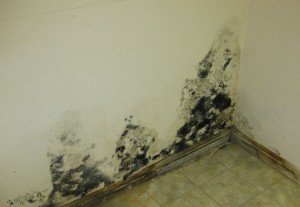The main job of a mould removal specialist in the UK is to make sure that human health is not compromised or affected by the presence of mould in a building.
While mould can grow and thrive in all buildings, this is found to be most common in older buildings that have been modernised with additions like double glazing. This prevents air flow and makes building less efficient when it comes to coping with dampness and humidity. Any kind of building, be it commercial or residential premises can get affected.
There is numerous legislation on mould as it is considered a public health concern. Mould is numerous types of fungi, some of these can be hazardous to both human and environmental health. At the least, they can cause eczema, asthma, and exacerbate allergies. Serious conditions include infection and pneumonia.

The job of mould removal specialists is to recognise and analyse these hazards to air quality and make or suggest improvements to a building’s mould remediation system. It can be preventative or curative if a problem is determined. They can also give suggestions on how to install or improve extractor fans or just advise employees on simple actions like keeping the windows open. They can even work hand in hand with building engineers to enhance a building’s structure to address the worst issues caused by mould.
Qualities of Mould Removal Specialists in the UK
A mould removal specialist can safely remove mould from different locations in a home, business, or commercial building. Similar to most technical jobs, there is a specialised set of skill expected from a mould removal technician because of equipment and biohazard concerns. Below are what it takes to become a mould removal specialist in the UK.
- ïAbility and willingness to work well as a team member and follow a supervisor’s instructions.
- ïCapacity to handle physically demanding jobs like moving appliances or furniture during a household removal job.
- ïBeing available on-call in case of emergency situations. The working hours might differ depending on the location, company, and specific industry.
- ïCapacity to work on a scaffold or ladder and overhead for a long period of time.
- ïAbility to carry out work in different temperatures wherein temperate might get extreme.
- ïCompetency to service, maintain, and use different types of equipment needed for mould removal like power tools and fans.
- ïAbility to render effective communication and offer exceptional customer service when performing mould removal at the work sites.
- ïAbility to correctly use self-care and personal protective equipment to stay protected against exposure to bio-hazardous contaminant.
- ïWillingness to complete the necessary certifications and participate in different training seminars.
- ïIdentify moisture readings with the use of moisture meters and calibrate instruments on a regular basis.
- ïKnowledgeable in inspection and identification of mould, willingness to work constantly on professional development.
Mould removal specialists in the UK usually need an understanding in subjects related public health, health & safety and biology to deal with the causes and effects of mould in residential and work spaces.
If you need advise regarding mould in your property please get in touch or see our mould removal page. http://www.firefloodlondon.co.uk/mould-removal-london-damp-specialists/

 020 8340 8338 or 07976 435 777
020 8340 8338 or 07976 435 777

 If you are unfortunate enough to experience fire or flood damage, call Fire and Flood, they take the stress out of the process and will have your place back to normal in no time.
If you are unfortunate enough to experience fire or flood damage, call Fire and Flood, they take the stress out of the process and will have your place back to normal in no time.